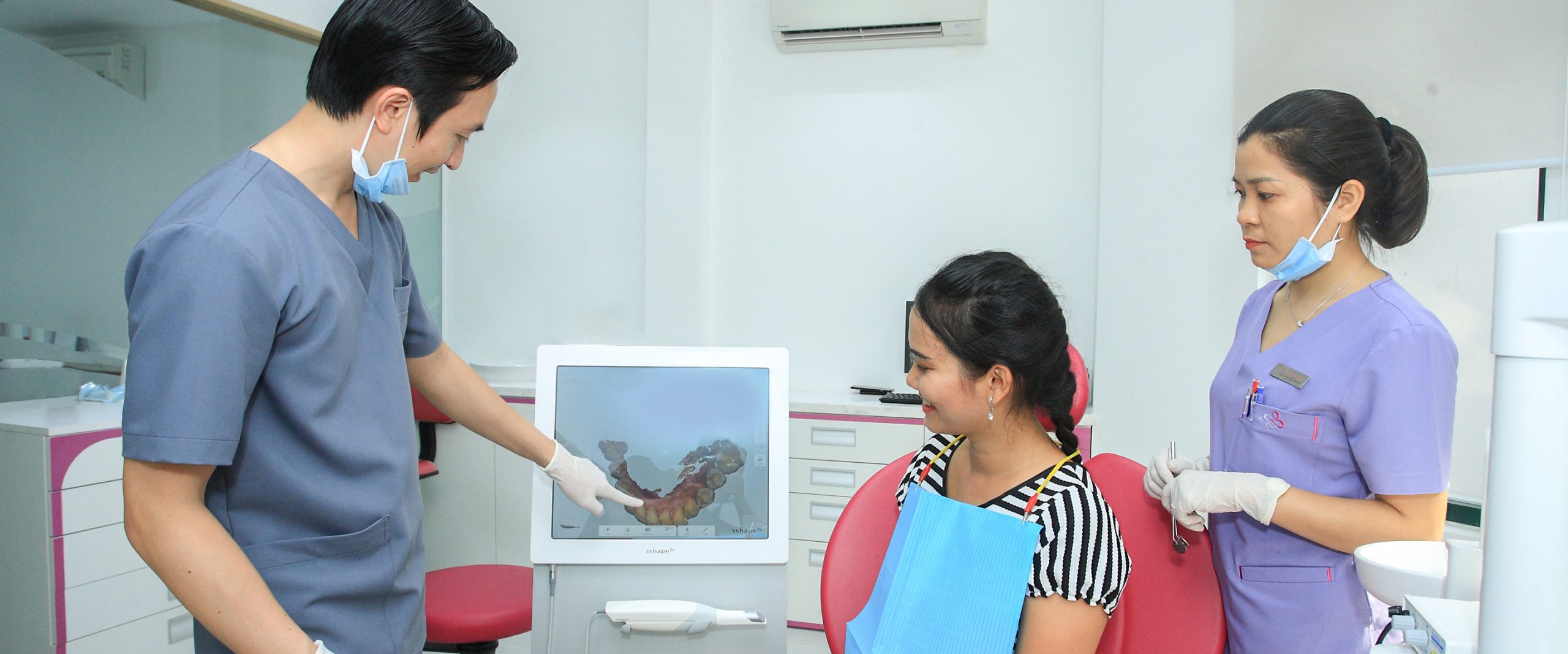Convincing patients of the need for major dental treatment is a challenging task for clinicians. Prospective patients come to Dr. Tran Hung Lam and Dr. Do Quynh Nhuat Elite Dental in Ho Chi Minh City, Vietnam, every day to consult on dental problems that often involve major treatment procedures and potentially high costs. We asked them to share some tips on how to communicate with patients, so they feel better equipped to take good decisions regarding treatment.

At Elite Dental, we are approached daily about major and expensive treatment such as orthodontic treatment with clear aligners or implants for fully edentulous patients. How to communicate effectively and convince patients/customers to agree to the treatment plan is the first challenge that all dentists face. We would like to pass on a few tips that we have successfully applied at our clinic.
The all-important treatment consultation
- Before the consultation, we make sure we have gathered all the necessary data, including the dental history, chief complaint, extra-oral as well as intra-oral photos to see the current situation in the patient’s mouth as well as X-rays to see the bone and the roots. We then examine and analyze these data before meeting with the patient to discuss the treatment proposal.
- During this consultation, we aim to discuss the proposed treatment with the patient while studying the photos and X-rays. This is best done with the patient away from the dental chair and in a situation that allows for good eye contact between the patient and doctor.

A new paradigm for effective communication with patients
- Patients first express their concerns – this is defined as the patient’s optimized treatment objectives or POTO.
- We then spend time building trust and satisfying their curiosity, discussing the problems, analyzing the potential damage existing conditions are likely to lead to if they remain untreated. We aim to enhance the awareness and interest of patients in their current problems without creating fear but clarifying what will happen if the problems are not addressed.
For example: the patient has been wearing a complete denture for 20 years that keeps coming loose and has already been replaced twice. The patient is worried about having implant treatment to restore habilitation. We can explain that the bone will continue to resorb both vertically and horizontally more and more each year. After a few years, vertical augmentation will be required – a complex procedure that takes 6 months to heal and is very expensive. The total cost for a full edentulous prothesis with 4-6 implants with vertical augmentation may cost 50% more compared to a standard case with just 4 implants. In some extreme cases, a zygomatic implant solution is indicated, which is even more complex.
- Doctors then express the dentist’s optimized treatment objectives – DOTO.
- The challenge for doctors and staff now is to bridge the distance between POTO and DOTO and bring them closer together. Often patients think “I may not really require the treatment”, “it’s too expensive”, “I am not currently in any pain” or “I am too busy to take time off for treatment”. The doctor should show similar cases done at the clinic for patients to see how the treatment is carried out, how long it will take, and the outcome that can be expected. Testimonials via video clips or pictures of patients in the same age group with a similar condition can have a strong and positive impact. Improved quality of life after treatment is also a strong motivator that doctors need to communicate to patients.

Tour of the clinic
The patient should be taken on a tour of the clinic to see the facilities and understand the infection control procedures in place. Some patients hesitate to have implant treatment if it is performed in the same dental chair as for other general dental procedures. They often feel more comfortable if a special room and dental chair are set aside for implant treatment. At Elite Dental, we have an operating room with specialized facilities including a high-end implant dental chair, with a periapical X-ray machine attached to help doctors check the implant immediately after placement. If patients understand how the clinic has invested in implant facilities to provide the patient with the highest level of safety, they feel more confident about starting the treatment.
Follow up
An email confirming the treatment plan with a timeline, number of appointments, cost and method of payment should be sent out within 24 hours. This should be followed with a phone call within 48-72 hours of the patient’s visit to the clinic.
Conclusion
A well-researched treatment consultation meeting is key towards converting prospective patients into treating patients. We need to share our expertise and experience and give them valuable advice in a way that they can identify with and understand. We want patients to take away a good impression of the clinic and the doctors, along with the recommendations they have made.
Looking to improve your patient communication? Then discover our online Dental Practice Management course, developed in partnership with IMD.







